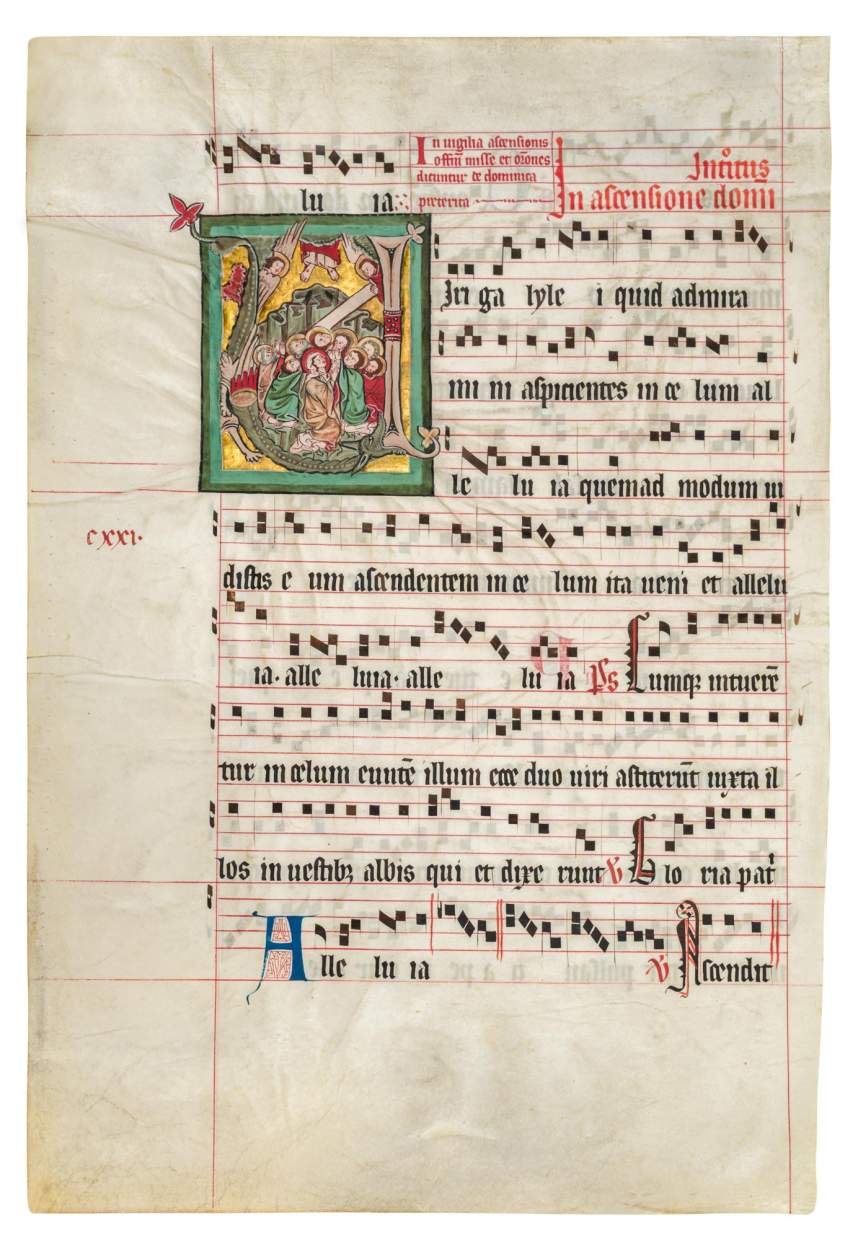

Ascension, Historiated initial U on a leaf from a Gradual. Germany, Regensburg, c. 1290-1300.

In front of a green, rocky hillside, the Virgin and eight of the apostles look up towards the disappearing figure of Christ, as he ascends to heaven accompanied by two angels. This group of holy observers is elegantly depicted with elongated figures, enveloped in sharply folded garments and wide, doll-like faces, highlighted with red dabs on their cheeks and lips. On the mountaintop, the illuminator has included a most charming detail: a strong imprint of Christ’s feet.
The body of the letter V is divided into two parts, the right shaft is painted in a warm shade of pale rose, and the left is made up of a magnificent winged green dragon devouring the body of the initial. The palette of the whole historiated initial is chosen carefully to create an interaction between the letter and the narrative scene. Particularly noteworthy of this colour mirroring is how the red feathers of the fabulous creature echo both Christ’s garments and Mary’s halo.
This musical leaf comes from a monumental Gradual, probably made for the Dominican nuns of Regensburg. The painted letter V introduces the text Viri Galilei (O men of Galilee), a Gregorian Chant for the feast of the Ascension, that is displayed in both sides of the leave in nine staves ruled in red ink, presenting a very graceful musical notation. Many sister leaves from the same codex are known today and preserved in public institutions and private collections all over the world.
With its clever details and beautiful colours, this leaf is a great example for the beauty of 13th-century German book art.



